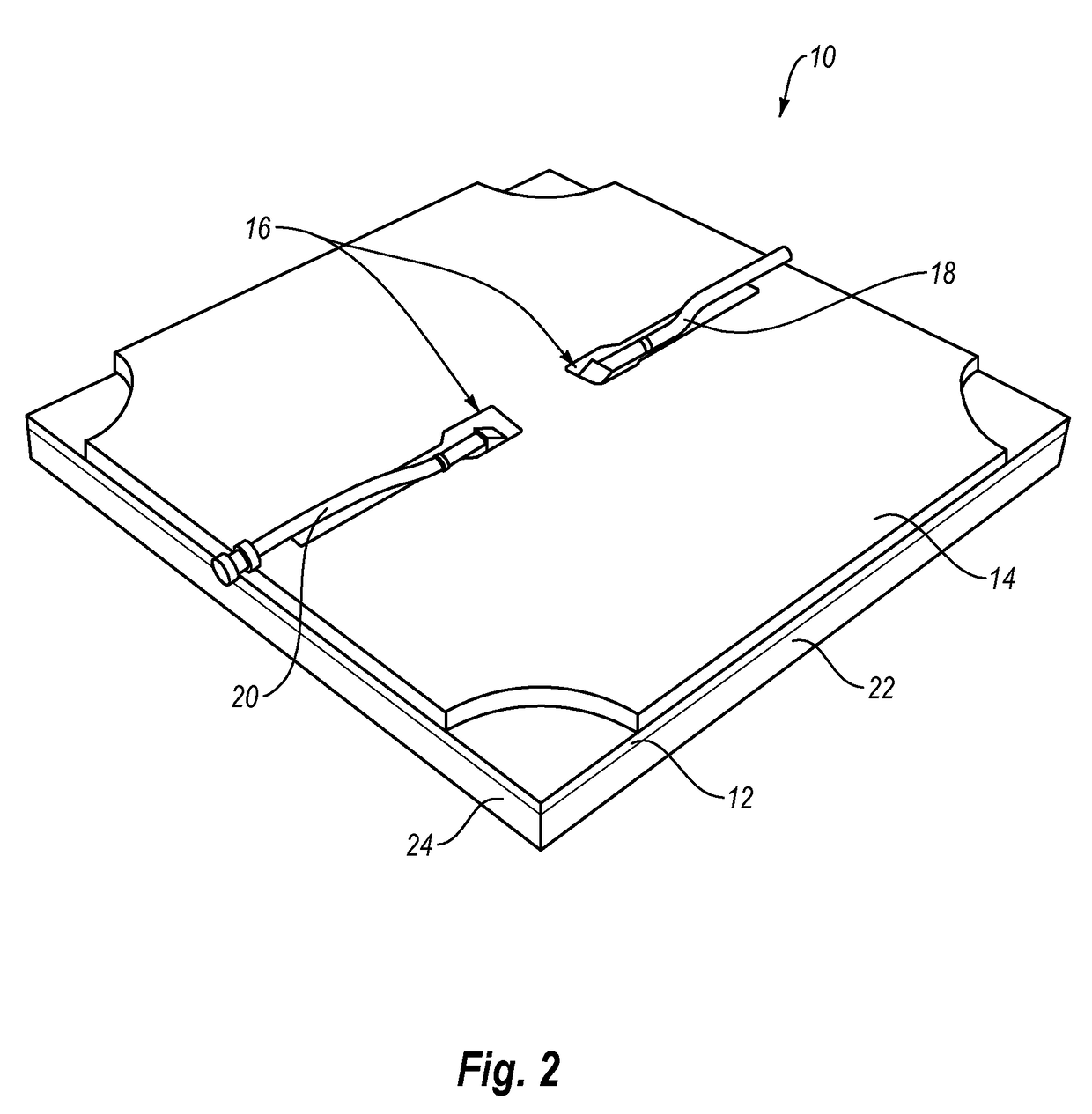Modular, fluid thermal transfer device
a fluid thermal and module technology, applied in the field of modules, fluid thermal transfer devices, can solve the problems of inability to join directly to, pre-formed pavers or slab units, and incompatibility of conventional thermal transfer systems, and achieve the effect of disassembly of the device and high efficiency of thermal energy transfer
- Summary
- Abstract
- Description
- Claims
- Application Information
AI Technical Summary
Benefits of technology
Problems solved by technology
Method used
Image
Examples
Embodiment Construction
[0036]One or more implementations of the present invention are directed to systems, methods, and apparatus that create many new opportunities for the use of thermal transfer between fluids and a thermal mass. In particular, one or more implementations include modular thermal transfer panels with simple, yet efficient designs. In one or more implementations, the modular thermal panels can function as invisible solar collectors.
[0037]Implementations of the present invention can include modular thermal panels made of thermal conductive material (e.g., aluminum) with channels formed inside. One or more thermal masses (i.e., an architectural tile) can cover the thermal panels. A thermal exchange fluid circulating through the channels can absorb from or transfer heat to the architectural tiles.
[0038]Modular thermal panels of the present invention can have various different uses. For example, it is common for flat roofed buildings, plazas and patios to have paver / slabs installed on pedesta...
PUM
 Login to View More
Login to View More Abstract
Description
Claims
Application Information
 Login to View More
Login to View More - R&D Engineer
- R&D Manager
- IP Professional
- Industry Leading Data Capabilities
- Powerful AI technology
- Patent DNA Extraction
Browse by: Latest US Patents, China's latest patents, Technical Efficacy Thesaurus, Application Domain, Technology Topic, Popular Technical Reports.
© 2024 PatSnap. All rights reserved.Legal|Privacy policy|Modern Slavery Act Transparency Statement|Sitemap|About US| Contact US: help@patsnap.com










